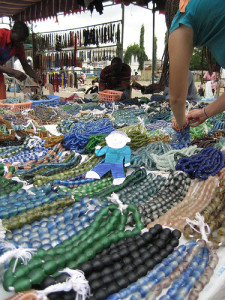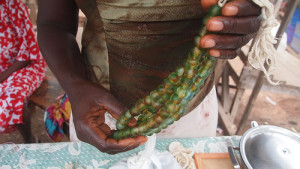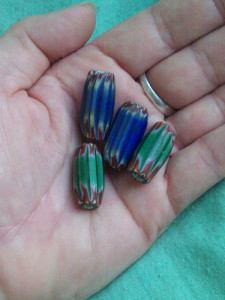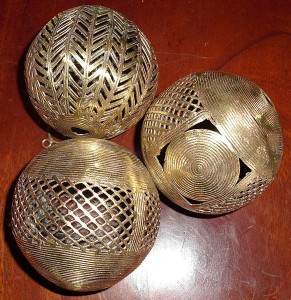I’ve always wanted to visit Ghana. Not just to witness the fascinating process by which recycled glass beads are made, but also to wander the fabled markets of Agomanya and Koforidua – the largest bead and textile markets in Africa. Rumors abound about the treasures to be found among the many hundreds of stalls lining the streets of Agomanya, including 17th Century Chevrons, and the even more collectible French Cross Beads traded into the region during the 19th Century.
Agomanya lies roughly 5 km from Kpong on the Somanya Road in the Eastern Manya District of Ghana. It’s primarily a center for agricultural trade, but since the 1950′s, has become rather better known for its textiles and glass beads made by local Krobo artisans. Every Wednesday and Saturday, artisans flock to the area from nearby Odumase, Kpong and Asesewa, to display their wares which range from expertly carved effigies of traditional deities to antique and contemporary glass beads in just about every color you care to think of.

Thousands of recycled glass bead strands are arranged by color on market stalls. Kate Yaeger Rotramel/ Flickr.
Beads are the primary allure for tourists to Agomanya. Strands of trade beads can be found for as little as ten Ghanaian Cedis (approximately $6), while strands of recycled glass beads tend to be much cheaper. Aware of tourist interest in Krobo bead production, some stall-holders offer demonstrations to show how old stained beads are transformed prior to resale. It’s actually a cunning technique known as “bead cooking”, whereby beads are heated in a pan of oil and water to alter the appearance of the skin, making them far newer and shinier in appearance. Ghana’s famous bead factory, Cedi’s, lies just a few kilometers from Agomanya, and provides a fascinating insight into the bead manufacturing process which has little changed in hundreds of years!


